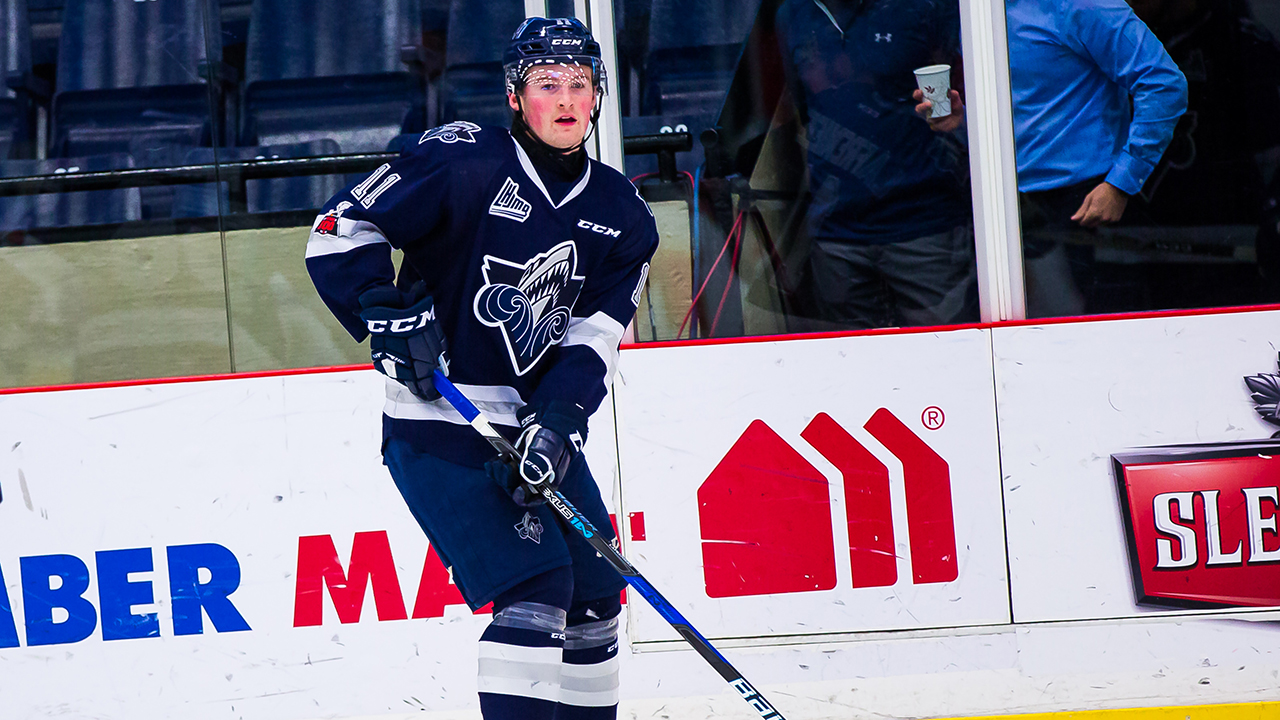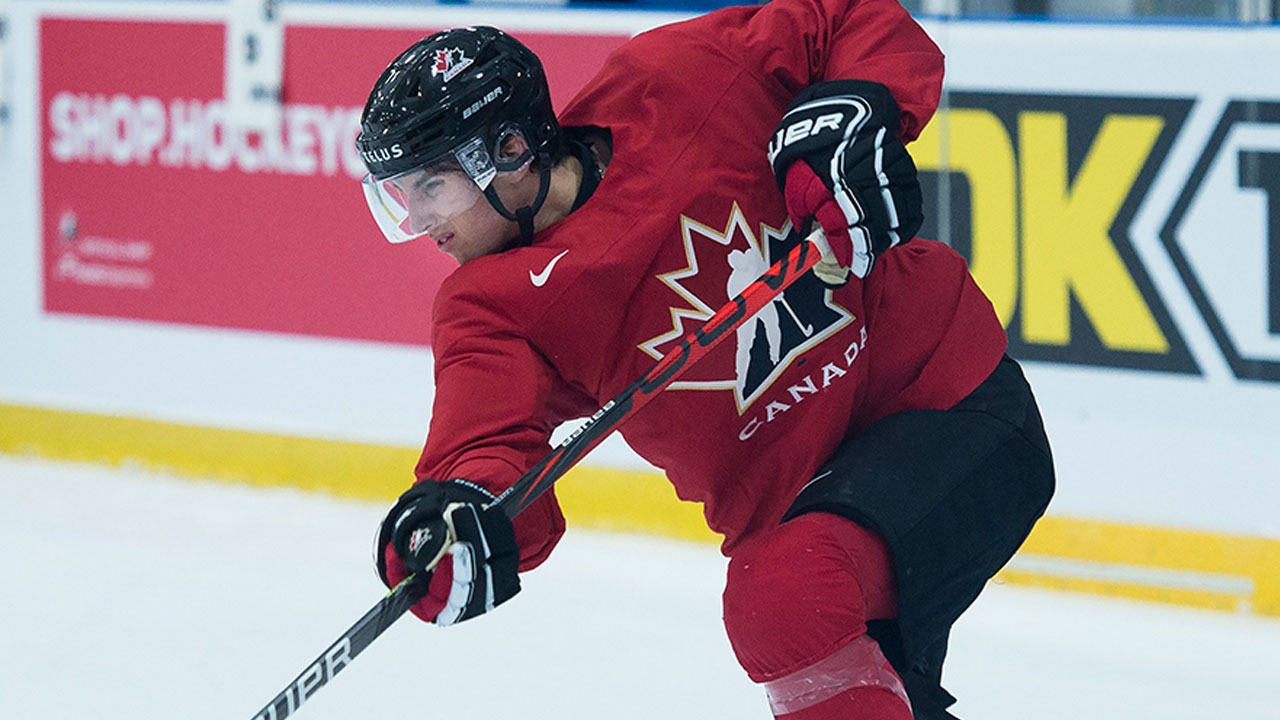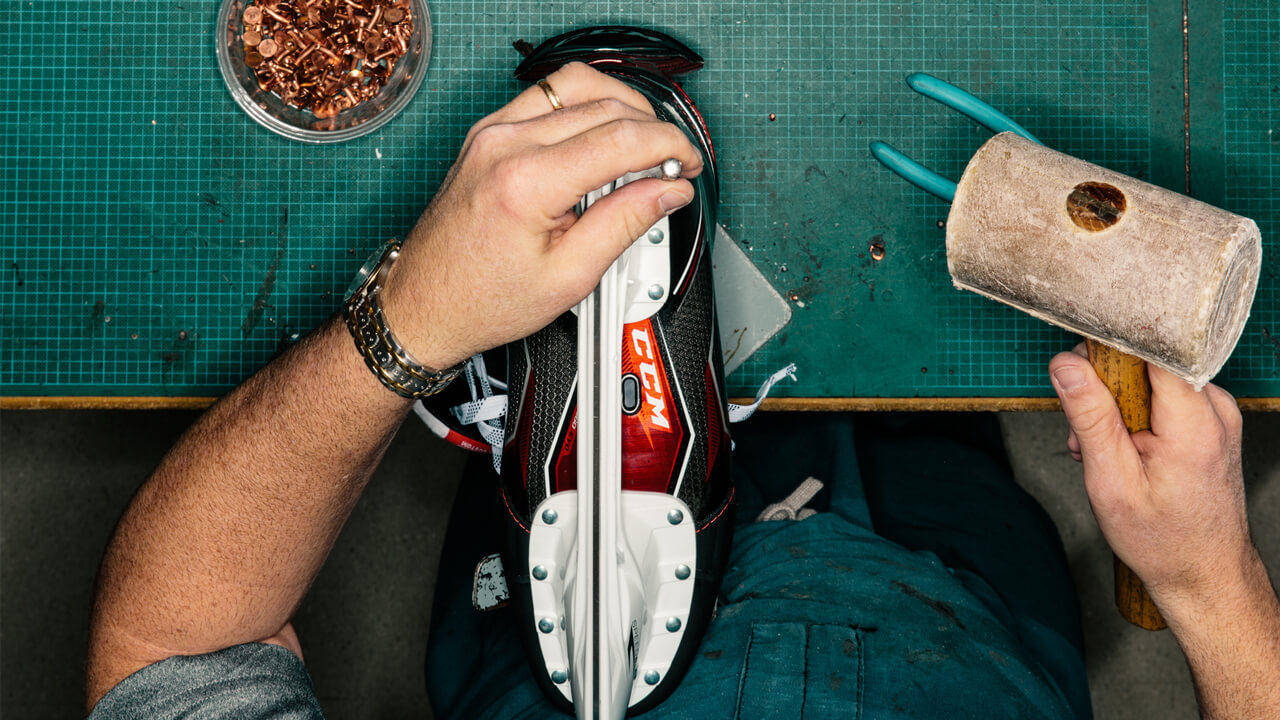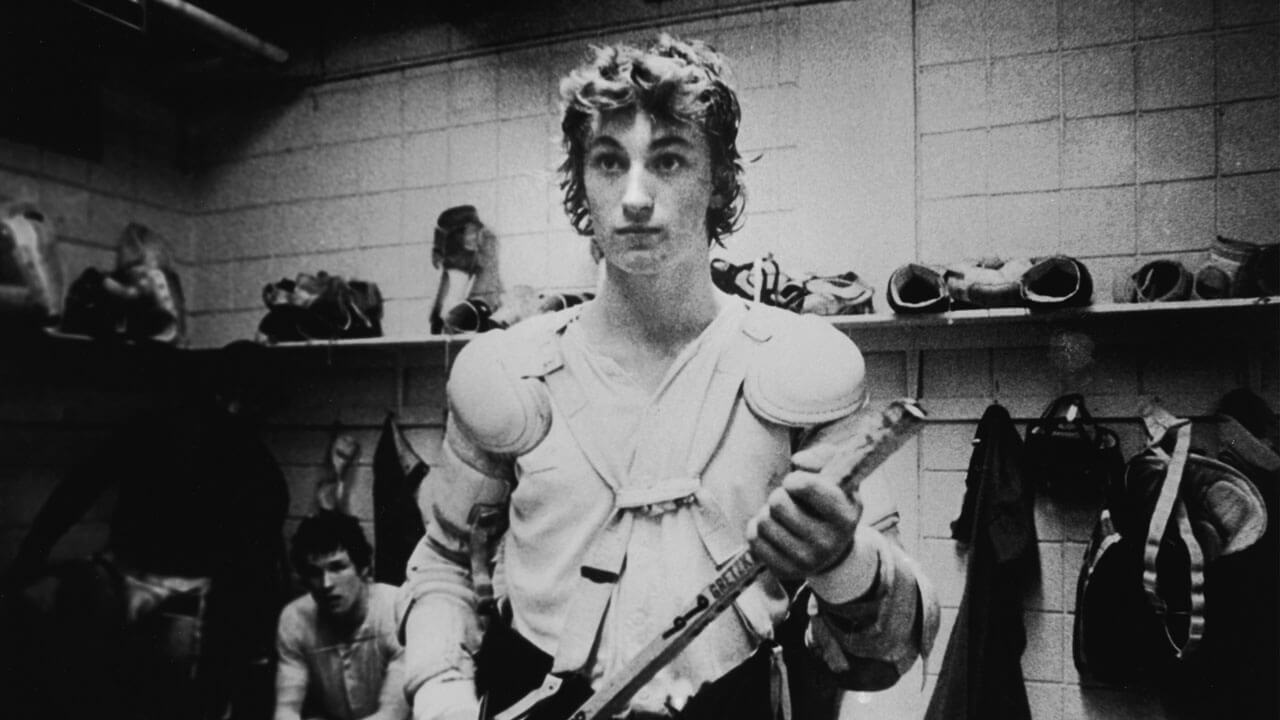Last November, late in the month when the cold had descended on Rimouski, Que., Alexis Lafrenière was at his billets’ home getting ready to walk the block or so to his high school when his cellphone rang. The screen showed a number he did not recognize. It turned out be Hockey Canada officials breaking good news: They were inviting him to evaluation camp for the 2019 world junior team; a chance to wear the maple leaf in the highest-profile tournament not waged by pros.
Making a world junior team has been and will ever be a goal for elite teenage prospects in Canada. It was a goal for Lafrenière, but one he thought he’d have to wait another year to achieve, at least. He made a round of calls and shared the news with his team in Rimouski, his parents and friends in the Montreal suburb of Saint-Eustache and his agent. He left messages for his billets at their workplaces.
Sports is the realm of inauthentic surprise. Has there ever been a GM on draft day who admitted that he fully expected a prospect to be there when his team’s turn came at the mic? Nonetheless, Lafrenière was explicably blindsided. “I wasn’t thinking about it,” he says, sounding as if still in disbelief. “There was no warning. I hadn’t gone to the [under-20] summer camp. I didn’t hear any talk. I wanted to play for the team someday, but I didn’t think it would be then.”
All could have been forgiven if those in Lafreniere’s inner circle had tempered expectations after the excitement around the invitation itself died down. They knew the numbers worked against him. Nineteen forwards in camp would be auditioning for 13 spots on the roster, and his birthdate, Oct. 11, 2001, made him all of 17. The last 17-year-old to make the roster had been Connor McDavid, who had clearly put himself on the radar, having been granted exceptional-player status by the CHL before winning MVP honors and leading Canada to gold at the IIHF under-18s the spring before his invitation.
Not that any of that weighed too heavily on Lafrenière’s mind. If the invitation amounted to nothing more than a chance to skate with the national junior team in practice and intra-squad games, a week’s worth of experience that might pay off later, that was fine by him. “I wanted to play well and give myself a chance to play for the team, but I didn’t put any pressure on myself,” he says. He knew the realities going in: Traditionally, the WJC was thought of as a tournament for 19-year-olds. Even if Hockey Canada had cracked the door open slightly, management favoured players a year or two out from their NHL drafts; players who had the benefit of at least one, and usually two, NHL training camps. Lafrenière was 80 or so major junior games removed from midget AAA hockey in Montreal.
Others, though — including Hockey Canada’s brain trust — were ready to push him. Lafrenière was again pleasantly surprised when he made the cut — even more so when he started the tournament on the Canadian team’s second line. It wound up being a disappointment, though, for Lafreniere personally, eventually relegated to the bench, and for Canada as a host team that watched the semifinals from the sidelines.
Contrast those scenes and emotions with the ones he’s experiencing a year later: His outlook is a complete counterpoint. Lafrenière knew he was getting the call this time. He was waiting for it. He has thought about the 2020 tournament ever since he unlaced his skates in Vancouver last January.
A little more than two months after his 18th birthday, he goes in not as a wild card, but as the reigning CHL Player of the Year and with the reasonable expectation of playing a prominent role, being a leader for this Canadian team, even the leader. Lafrenière’s first trip to the world junior tournament was an ultimately rocky ride over the holidays, but this time it will be all business. Even though most of the elite prospects are already drafted, the WJC is appointment viewing for NHL scouts and executives. Draft-eligibles who perform well in the tournament can greatly increase their stock — and those who don’t can leave a bad taste in people’s mouths. It’s a situation Lafrenière must be keenly aware of, both because of his performance last year and because all of his chief rivals for No. 1 — as many as six players in the projected top 10 of the 2020 NHL Draft — will be in the Czech Republic. The current frontrunner to go first overall, Lafrenière’s personal stakes are raised further by the fact that he’s playing to lock down that status as the best-in-class.
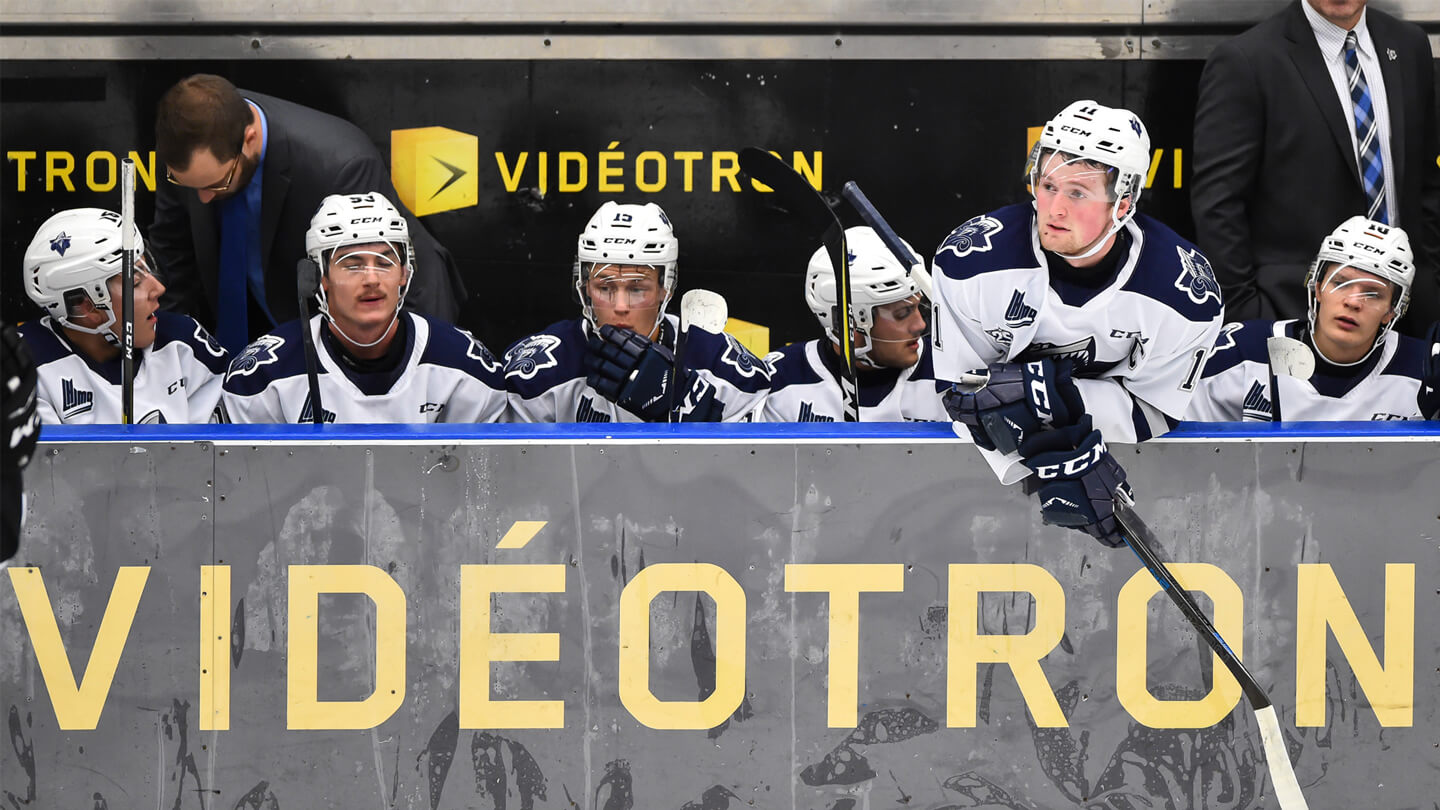
Though Alexis Lafrenière’s default mode is sincere understatement, he inspires overstatement that can border on the reckless. Consider the opinion of Wayne Gretzky at the 2018 world summer under-18s: “He reminds me of Gilbert Perreault,” Gretzky told Sportsnet’s Mark Spector. “He can skate, handle the puck. He’s just around the puck so much. When you have that much puck sense, that much speed, I can see him being a centreman at the next level.”
Gretzky might not have been in the front rank as a coach or GM but his scout’s eye for talent has proven pretty good. (In your Book of Modern NHL Lore, see “Crosby, Sidney.”) So No. 99’s words pack some weight, and yet they also hint at the multi-million-dollar question still hanging out there: Lafrenière is an obvious and shining talent, but what position should he play at the next level?
Lafrenière isn’t a dead lock to go No. 1 in 2020. Others have played themselves into the conversation, most notably Sudbury Wolves centre Quinton Byfield, who’ll also be in the Canadian juniors’ lineup this trip. That Lafreniere and Byfield will be wearing the same sweaters and possibly playing alongside each other makes for a fascinating game within a game — easy comparison shopping for NHL scouts. Byfield can make his bid to move to the top of the list, but the kid who goes into his draft season as the projected first-overall pick is generally the first one to leave his seat and head to the stage in June. If history is any indicator and scouting reports can be trusted: Lafrenière, the frontrunner, will probably go first.
And therein lies the rub: Over the past 12 drafts, eight centres, two defenceman and two wingers have been taken first overall — a recent history that points to a remarkable positional bias. That one of those two wingers, Nail Yakupov, washed out as an NHL player after being the top pick in 2012, only underlines the point.
Though Gretzky compared Lafrenière to Perreault and Mark Messier, a pair of Hall-of-Fame centres, and though one scout name-dropped Mario Lemieux and another Peter Forsberg, Lafrenière has always played left wing in Rimouski and did likewise with the world junior team last trip. Rarely do fans or executives of lottery-winning teams say they’re a winger away from being a contender. Most of the hindmost teams are either consistently out-matched by opponents’ centres (Detroit, Ottawa, Minnesota and the Rangers) or, looking forward, needing to replace ageing future Hall of Famers at the position (Jonathan Toews in Chicago, Anze Kopitar in Los Angeles or Ryan Getzlaf in Anaheim). If Lafrenière is going to be the No. 1 pick next June, does he in fact have to be a centre? A teenager could easily be discomfited by any mention in the same sentence as legends who have gone before him, but even more so by every projection that shifts him out of his comfort zone.
A young player moving from centre to wing at the NHL level is far more common than vice-versa. The conventional wisdom holds that the demands on centres without the puck and in retreat on defence are far more daunting than the back-checking expected of wingers. Said one veteran scout: “You’d be asking a lot of a player to learn the NHL game at the same time that he’s being moved into the middle.”
That said, a select and famous few have done just that. Gretzky cited Mark Messier, but he could have added Mats Sundin into the mix — he had played at least as much right wing as centre. And Claude Giroux was a winger with Gatineau in the QMJHL and drafted as such by Philadelphia in 2006, but fairly seamlessly moved into the role of first-line centre for several seasons. Fair or not, the perception persists: Wingers are the needed complements, with centres serving as the foundational players.

By now Lafrenière is used to being mentioned alongside a couple of centres who landed as No. 1 picks: namely Vincent Lecavalier and Sidney Crosby. In fairness, he resembles neither the long, lanky Lecavalier or the powerful and intuitive Crosby. But the three do have at least one thing in common: they all skated for the Rimouski Oceanic in the QMJHL; premiere talents who opted to commit to a team in one of major junior’s smaller markets. Like Lecavalier and Crosby, Lafrenière could have wielded clout and let the team know in advance that he would prefer to play elsewhere, someplace closer to home. Like Lecavalier and Crosby, he didn’t.
Though Rimouski had less than a one-in-five chance of winning the 2017 QMJHL draft lottery, Lafrenière’s father, Hugo, told people for weeks before that he thought the Oceanic’s ping-pong ball would be the one to fall out of the tumbler. It was not the most convenient turn of events for the family, and has meant hundreds of hours driving down the south shore of the St. Lawrence on Highway 20. But it could’ve been worse: other teams are even farther flung. “The important thing was [that] my parents can come see most of the games at home on weekends,” he says. “It’s a long drive from Montreal, so they don’t go to all road games, not even all the ones closer to Montreal. After a lot of times [on the road], we might only have 10 minutes to talk [to our parents] before we have to get back on the bus. It’s a long way to go for 10 minutes. You know, they’ve made big sacrifices for me to get this far. I appreciate that, but at some point, it’s enough. We talk every day. We text. They know things are fine.”
Lafrenière did have one superstar’s endorsement of Rimouski. “I had never spoken to Vincent or Sid, but I knew that coming here was good for them,” he said in the season-ticket holders’ lounge at the Colisée Financière Sun Life, which is decorated with photos from the days that Lecavalier wore the Oceanic’s No. 4 and Crosby his signature No. 87. “I did talk to Brad Richards [who led the Oceanic to the Memorial Cup in 2000] and he said that Rimouski is a great place to play … has everything you need and lets you focus on what you really need to focus on to play in the NHL.”
Any teenage prospect’s head might start swimming with far less on the line. For Lafrenière, potential distractions just go with the territory. He’s still a year away from the NHL but he has an exclusive deal in place to be a “spokesperson” with Upper Deck, whose client list reads like a sports-page pantheon: Gretzky, McDavid, Tiger Woods, Serena Williams and LeBron James, among others. “Upper Deck is very methodical in analyzing athletes who will be influential, and the company identified Alexis early on,” says Émilie Castonguay, Lafreniere’s agent with Momentum Sports. “Being a spokesperson there is the highest designation. Each one of them gets a room with their name. When they flew Alexis out to California to meet with them, [the Upper Deck executives] showed him the room they’re doing for him, right next to Serena’s.”
And yet, despite this heady company with Upper Deck, Lafrenière leads a quiet and by comparison even cloistered life. His high school and the arena are both less than a two-minute walk from his billet house, so close that he goes back there for lunch in the middle of his school day. He has his run of the house a fair bit, living solo with a pair of empty nesters — she a teacher and he a bank worker. While other Upper Deck spokespeople are trying to claw back a little normalcy from the paparazzi, Lafrenière’s idea of a big time is a weekend when he’s not riding the bus and his parents drive up from Montreal to take him for dinner.
And that quiet seems to suit him. In part because Lafrenière’s route to Rimouski was marked by caution. Hockey Canada’s fast-tracking him to the world junior team last winter broke from a close-to-the-vest career path. Yes, he scored 30 goals and racked up 83 points in only 36 regular-season games with the Saint-Eustache Vikings in midget AAA and wound up as the first-overall pick in the QMJHL draft, but at no point was his development accelerated. In age-group hockey, Lafrenière never “played up” — he always skated with others his age. “Playing in my [birth year] was enough of a push,” he says. “Being a late birthday, it’s a little like playing up, especially in atom or peewee, when other kids are nine or 10 months older. And really, I wanted to play with my friends, people I knew outside the team or from school.”
Another contributing factor: Though he’s listed at six-foot-one these days, he was maybe not even average height as a middle schooler. “He had this growth spurt around bantam age, three or four inches in a year, and with nothing like the awkward stuff that usually goes with that,” one Montreal minor-hockey coach said. “The exact opposite really … it was like his body caught up to his game.”
Many elite teenagers, including Lecavalier and Crosby in their days, move away from home at age 14 or 15 to play at prep school-slash-hockey hothouses, while others move in search of stiffer age-group competition, like when Patrick Kane left Buffalo to play in Detroit. Yet Lafrenière stayed at home. “I didn’t have to leave because [minor hockey] is really strong in Montreal,” he says.
Because of his October birthday, Lafrenière played his first month or so in Rimouski at the age of 15 and the step-up came as a bit of a shock: “There were 19- and 20-year-olds … men,” he says. “It was a tough time figuring that out … thrown into it right away and, for me, it’s the first time away from home.”
While it might have seemed tough, Lafrenière started his major junior career with a flourish, scoring five points in his first six games with Rimouski. He maintained that sort of production through the balance of the season, winning the CHL’s Rookie of the Year Award with 42 goals and 80 points in 60 games.
Lafrenière’s performance won him an invitation as an under-ager to the spring under-18 world championships and then to the summer under-18s where, as the youngest player on the roster, he not only served as a captain but scored two goals in the gold-medal game against Sweden, including the game-winner. In short, Lafrenière had skated many miles before he hit his first patch of bad ice, that being what came after that phone call last November: the 2019 world juniors.

Memory can play tricks, and just as Lafrenière remembers a “tough time” in his dominating first weeks in the Q, his description of his trip to B.C. for the world juniors as “an amazing time” and even “a dream” also seems out of touch with reality. You’d imagine a quarter-final elimination at home would have come as a crushing disappointment to most players on the Canadian roster, and maybe to Lafrenière most of all.
At the start of the tournament, he was skating on Canada’s second line — with the exception of perhaps only McDavid, the underagers who make the world junior team haven’t been trusted with so prominent a role. Coach Tim Hunter second-guessed the decision, however, and in short tournaments patience is measured in shifts. The coach spared no one’s ego in his assessments of the Canadian team’s play — Lafreniere took the worst of it. Most coaches would choose their words diplomatically, at least in front of the media, and especially with a younger player, but Hunter described Lafrenière’s performance in a 14–0 victory over Denmark in which he had zero points as “a free skate.” The coach didn’t stop there in his complaints about Lafrenière’s lack of urgency. “He had lot of circles in his game and we weren’t happy about that,” Hunter said. “I told him, at the start of the game, ‘You’re going to show me if you’ve understood this or not. And if you don’t, we’re going to limit your ice time.’”
Hunter judged Lafrenière harshly but was as good as his word. The coach dropped his ice time. By the end, the brightest talent in his draft class was stuck on the bench, giving way to the older players. A tournament that offered a promised preview of the prospective No. 1 ultimately delivered not much more than a glimpse. And yet, Lafrenière seems sincere when he says he looks back on the tournament as a learning experience to build on, to take back to Rimouski and to the 2020 world juniors and beyond. “[The tournament] is different than playing here in Rimouski or even playoff hockey,” he says. “We all know that the tournament can come or go on one shift. So you can’t be selfish. You have to be willing to help any way, do it for your teammates. If you are the 13th forward, if you kill penalties but aren’t on the power play … you do it and you don’t ask questions. I play on the left side but if they want me to play on the right [side] or at centre, it’s what you have to do for your team and for your teammates, no questions. I think it’s not just the best talent, the most skill, that wins the tournament but the team with the best chemistry.”
So now, in his second and likely last world junior tournament, Lafrenière comes back wiser and better by his reckoning. At just over 200 pounds, he’s 20 pounds heavier and proportionally stronger than he was in his rookie season in Rimouski. He says it’s a matter of off-season work and the trip from adolescence to manhood. “I can feel the difference in what I’m able to do out there,” he says. “I’m stronger on the puck on the cycle. My first step is better, better speed.”
It would be hard to imagine that the CHL Player of the Year would be a candidate for the most improved teenager in junior hockey, but you can mount a good case with the numbers alone: last season, 37 goals and 105 points in 61 games; this season before heading to the Czech Republic, 23 goals and 70 points in 32 games — better than two points a night. His teammates offer anecdotal back-up. Says Lafrenière’s centre Cédric Paré: “I think Alexis came back from world junior on a mission. He saw what it’s like at another level of the game — he skated with pros before, but to play with so many top players, he used that as motivation. Then when he came to training camp in August, I saw that he was so much faster and stronger on the puck, so dangerous on the forecheck.”
In the past, naysayers might’ve claimed that Lafrenière was running up numbers in the weakest major junior league. Today, it doesn’t square with the facts. The competition in the Q hasn’t been easy, with as many as six players on the circuit figuring to go in the first round after Lafrenière is selected.

Going into this world junior tournament, there are two big questions still surrounding Lafrenière: Can he overcome past performance and the pressure to turn in a showing better than those also vying to be the first-overall pick come June? And, part and parcel with the first, does he give you the best chance to win at centre, rather than left wing?
One school of thought holds that a move to centre would be not only what’s best for the team that drafts Lafrenière but also, in the long run, the best match for his set of skills. His game is best when the puck is on his stick, so why not put him at the position where the puck will be on his stick most often? “He reminds me of Peter Forsberg with all the strength he has on the cycle … the same reverse check, the toughness,” one scout says. “He has great vision and incredible hockey sense, so he can be in play all the time at centre. He’s a great talent for sure, but you might be stifling it if you don’t at least try to use him down the middle.”
Another school of thought maintains that you don’t mess with a good thing. Said another scout who has watched Lafrenière 20 times: “Even in junior he’s not playing [centre] and the NHL is a tough place to learn another position — easier going from one wing to the other than from either wing to centre. He sees the game best on the left side. Put him in a position to succeed. When Chicago drafted Patrick Kane, they had the idea that maybe his playmaking and puck skills would fit as a centre, but he’s spent all those years processing things from one side of the ice. The player knows his game better than anybody. If it’s comfort zone, then he knows.”
One scout who sees Lafrenière up close on a nightly basis believes he doesn’t need to move to centre to drive play. An import from Omsk, Russia, Dmitry Zavgorodniy, was installed on right wing across from Lafrenière and beside Paré last season, and it’s understandable that he doesn’t want to upset the mix. A seventh-round pick of the Calgary Flames in 2018, Zavgorodniy had 16 goals and 43 points in 23 games before suffering a broken collarbone in November. “Alexis makes plays and finds you with the puck all the time,” he says. “He sees everything from his side and makes plays no one else sees. We have the rest of the ice to skate into … lots of room. Without the puck, you have to be ready for a pass from him even if you don’t know how he’s going to do it. Alexis can play anywhere on the powerplay and [the Oceanic] move him around, but I think he’s hard to play against [on left wing]. He makes Cédric and me better players. He does the same for anybody he plays with [from left wing]. That’s the place [for him] I think.”
And for some it’s not a black-and-white proposition. Lafrenière’s minor-hockey coach back in Saint-Eustache, Martin Daoust, sees Lafrenière starting out in the NHL on left wing but maybe moving to centre later on. “At 18, on the wing, Alexis can be creative in the pros without all the defensive responsibilities that go with playing centre,” Daoust says. “Hopefully [as an NHL rookie] he gets an experienced centre — 24, 25 years old — who can get him the puck and play the 200-foot game. What he does after that, he’ll figure it out when it’s time. His temperament is never to look too far ahead … in the arena, he lives in the moment.”
Lafrenière doesn’t equivocate … much. “I’ll do whatever they ask me [at the world juniors or in the NHL], but I’ve always been a winger. I’m comfortable there. I watch Patrick Kane videos. I’ll see what he does during a game and the next day I try it at practice. He’s the player that I’d like to be. I’ve always been a winger, every team that I played for. I think it’s where I can help a team most.”
At the world juniors and in the NHL, coaches will have to strike a balance between their position of need and Lafrenière’s best position to succeed. These games in the days ahead offer Lafreniere a shot at redemption after the collective and individual disappointments of a year ago. They might also offer more than a glimpse of the touted prospect’s ability to drive play from what he considers his natural and best role. Gretzky and others have offered up their opinions but Alexis Lafrenière will have to back up his position with his play. Wherever and however he plays, we’ll know a lot more about how teams feel about him in just a few short weeks.

